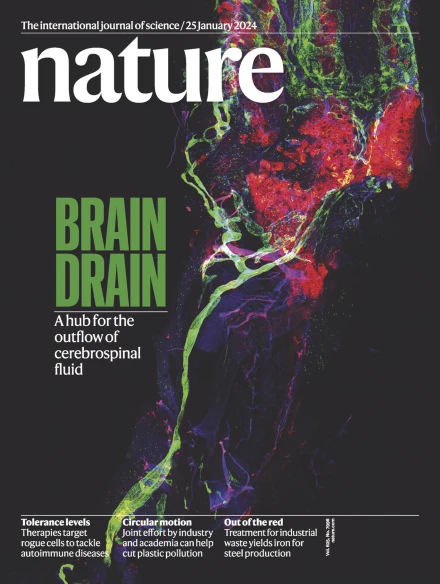可编程模拟器上的量子粗化和集体动力学
IF 48.5
1区 综合性期刊
Q1 MULTIDISCIPLINARY SCIENCES
引用次数: 0
摘要
理解非平衡多体系统的集体量子动力学是量子科学的一个突出挑战。特别是,由量子涨落驱动的动力学对于物质的奇异量子相的形成、基本高能过程、量子计量学和量子算法非常重要。在这里,我们使用一个基于里德伯原子阵列的可编程量子模拟器来实验研究(2+1)维伊辛量子相变的集体动力学。在越过量子临界点后,我们观察到反铁磁有序畴通过粗化而逐渐增长。通过确定性地准备和跟踪有序畴的演化,我们发现粗糙化是由畴边界的曲率驱动的,并且发现随着量子临界点的接近,动力学加速。我们定量地探索了这些现象,并进一步观察了顺序参数的长寿命振荡,对应于振幅(希格斯)模式7。这些观察结果为强相关量子系统和非平衡量子过程中的涌现集体动力学提供了一个视角。利用基于里德伯原子阵列的可编程量子模拟器研究了量子相变的集体动力学,并观察了量子粗化现象。本文章由计算机程序翻译,如有差异,请以英文原文为准。

Quantum coarsening and collective dynamics on a programmable simulator
Understanding the collective quantum dynamics of non-equilibrium many-body systems is an outstanding challenge in quantum science. In particular, dynamics driven by quantum fluctuations are important for the formation of exotic quantum phases of matter1, fundamental high-energy processes2, quantum metrology3,4 and quantum algorithms5. Here we use a programmable quantum simulator based on Rydberg atom arrays to experimentally study collective dynamics across a (2+1)-dimensional Ising quantum phase transition. After crossing the quantum critical point, we observe a gradual growth of correlations through coarsening of antiferromagnetically ordered domains6. By deterministically preparing and following the evolution of ordered domains, we show that the coarsening is driven by the curvature of domain boundaries, and find that the dynamics accelerate with proximity to the quantum critical point. We quantitatively explore these phenomena and further observe long-lived oscillations of the order parameter, corresponding to an amplitude (‘Higgs’) mode7. These observations offer a viewpoint into emergent collective dynamics in strongly correlated quantum systems and non-equilibrium quantum processes. A programmable quantum simulator based on Rydberg atom arrays is used to study the collective dynamics of a quantum phase transition and observe the phenomenon of quantum coarsening.
求助全文
通过发布文献求助,成功后即可免费获取论文全文。
去求助
来源期刊

Nature
综合性期刊-综合性期刊
CiteScore
90.00
自引率
1.20%
发文量
3652
审稿时长
3 months
期刊介绍:
Nature is a prestigious international journal that publishes peer-reviewed research in various scientific and technological fields. The selection of articles is based on criteria such as originality, importance, interdisciplinary relevance, timeliness, accessibility, elegance, and surprising conclusions. In addition to showcasing significant scientific advances, Nature delivers rapid, authoritative, insightful news, and interpretation of current and upcoming trends impacting science, scientists, and the broader public. The journal serves a dual purpose: firstly, to promptly share noteworthy scientific advances and foster discussions among scientists, and secondly, to ensure the swift dissemination of scientific results globally, emphasizing their significance for knowledge, culture, and daily life.
 求助内容:
求助内容: 应助结果提醒方式:
应助结果提醒方式:


